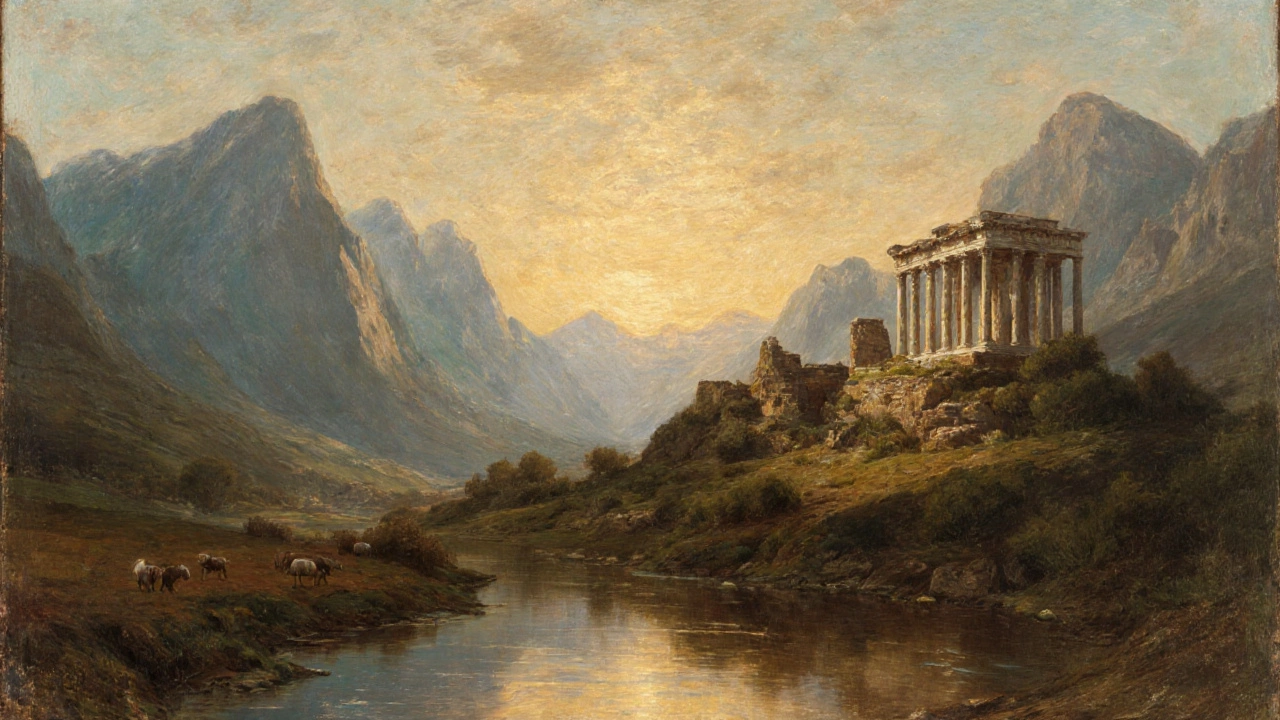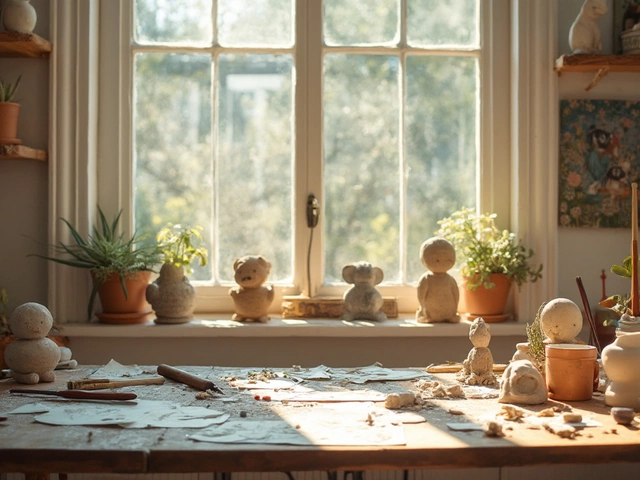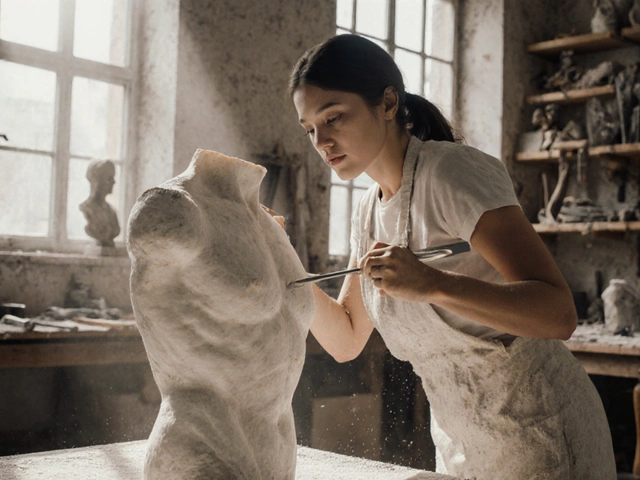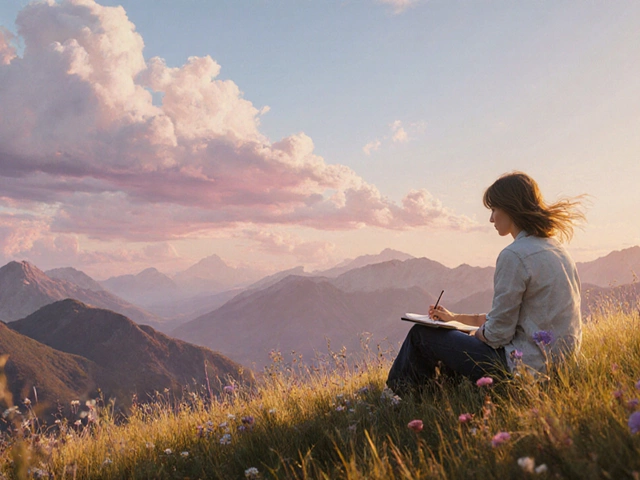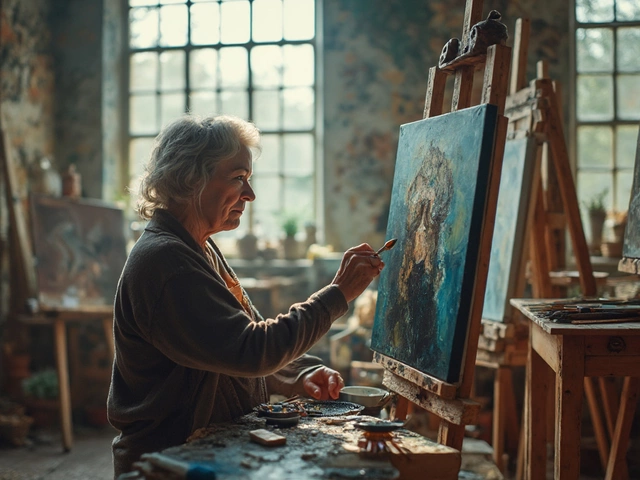Landscape Painting Type Identifier
This quiz helps you identify which type of landscape painting you're looking at. Based on key characteristics described in the article, answer these three questions to determine if it's an idealized (classical) or observational (plein air) landscape.
1. How is the composition structured?
2. What is the primary focus?
3. How is the light and brushwork presented?
Your Result
Key Takeaways
- The two dominant categories are idealized (classical) landscapes and observational (plein air) landscapes.
- Idealized works emphasize mood, symbolism, and compositional drama, often drawing on ancient or mythic themes.
- Plein air paintings strive for faithful, on‑site representation of light, weather, and atmosphere.
- Knowing the hallmarks of each type helps you read a painting’s intent and place it in art‑historical context.
- Key movements-Romanticism, the Hudson River School, the Barbizon School, and Impressionism-illustrate how the two types evolved across continents.
When you walk into a gallery and see a sweeping view of mountains, rivers, or rolling hills, you’re looking at a Landscape painting is a genre that depicts natural scenery such as mountains, valleys, trees, rivers, and coastlines. It can be a pure representation of a place or a staged, symbolic vision of nature.
Art historians generally split the genre into two main camps. The first leans on tradition, mythology, and dramatic composition; the second relies on direct observation, quick brushwork, and a scientific eye for light. Understanding these camps not only enriches your appreciation but also equips you to talk about art with confidence.
1. Idealized (Classical) Landscape Painting
Idealized landscape focuses on creating a perfected, often mythic view of nature rather than a literal snapshot. Artists manipulate scale, light, and mood to convey philosophical ideas, religious narratives, or political messages. The goal is not to reproduce a specific place but to evoke a timeless, universal feeling.
Key attributes:
- Composition: Balanced, often using the Golden Ratio or triangular arrangements.
- Palette: Muted or exaggerated colors to heighten drama.
- Subject matter: Ruins, shepherds, mythic figures, or allegorical symbols.
- Technique: Layered glazing, meticulous detail, and smooth brushstrokes.
Notable movements and artists:
- Claude Lorrain 17th‑century French painter whose luminous, idealized vistas set the bar for academic landscape.
- J.M.W. Turner British master who blended atmospheric effects with grand, almost mythic scenery.
- John Constable although famous for realism, his early work often idealized the English countryside.
- The Hudson River School 19th‑century American group that painted expansive, almost spiritual visions of the North American wilderness (e.g., Thomas Cole, Asher B. Durand).
These works were favored by academies, patrons, and governments because they could convey power, divine right, or national identity without being tied to a specific location.
2. Observational (Plein Air) Landscape Painting
Plein air means painting outdoors, directly from the environment, to capture fleeting light and atmosphere. The term, borrowed from French, became a rallying cry for artists who rejected studio conventions in favor of immediacy.
Key attributes:
- Technique: Rapid brushwork, broken color, and visible strokes.
- Palette: High chroma, often using complementary colors to render light.
- Materials: Portable easels, oil paints in small tubes, and canvas boards.
- Subject matter: Everyday scenes-fields, farms, city parks-captured under specific weather conditions.
Groundbreaking movements and figures:
- Barbizon School mid‑19th‑century French painters who gathered near the Forest of Fontainebleau to paint directly from nature (e.g., Théodore Rousseau, Jean-François Millet).
- Impressionism late 19th‑century movement that codified plein‑air practice with artists like Claude Monet, Pierre‑Augustin Renoir, and Camille Pissarro.
- American landscape painters such as Albert Bierstadt who combined plein‑air observation with epic scale in the American West.
- Modern practitioners continue the tradition in watercolor, acrylic, and even digital media.
The observational approach shifted the focus from allegory to authenticity, paving the way for modern art’s embrace of everyday life.
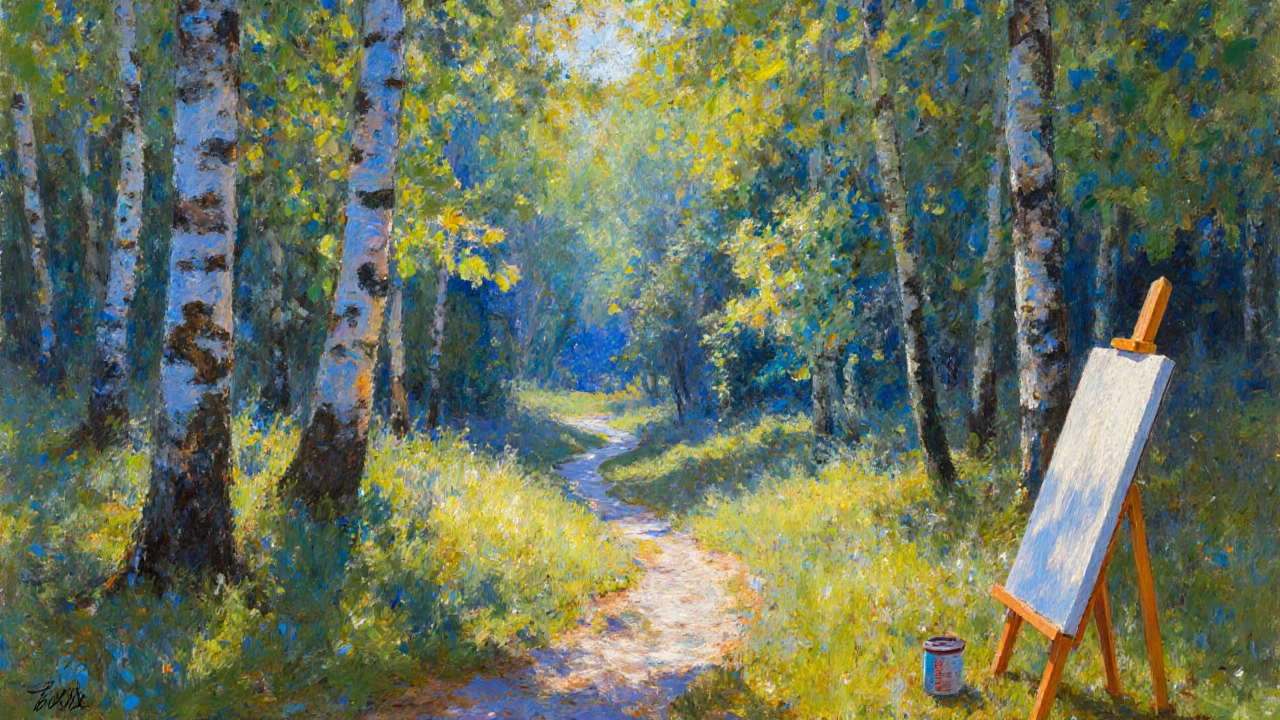
3. Direct Comparison
| Aspect | Idealized (Classical) | Observational (Plein Air) |
|---|---|---|
| Primary Goal | Convey mood, symbolism, or narrative | Capture actual light, weather, and atmosphere |
| Typical Setting | Studio, imagined or composed scenery | Outdoor, directly on location |
| Brushwork | Smooth, blended, often invisible strokes | Visible, broken, rapid strokes |
| Color Palette | Harmonized, sometimes exaggerated for drama | High chroma, captured from nature |
| Key Movements | Baroque idealism, Hudson River School, Romanticism | Barbizon, Impressionism, American West plein air |
| Representative Artists | Claude Lorrain, J.M.W. Turner, Thomas Cole | Claude Monet, Théodore Rousseau, Albert Bierstadt |
4. How to Spot Each Type in a Painting
When you stand before a landscape, ask yourself these quick questions:
- Does the scene feel staged or spontaneous? A perfectly balanced composition usually hints at idealization.
- Are there visible brushstrokes and daring color juxtapositions? That points to plein air.
- Look for narrative elements-figures, ruins, mythic symbols. Their presence often belongs to the classical camp.
- Check the light. If the sun seems painted to illuminate the whole canvas uniformly, it’s likely studio‑crafted. If the light creates sharp shadows and highlights changing across the canvas, it’s probably painted on‑site.
These clues help you decode the artist’s intent without needing an art‑history degree.
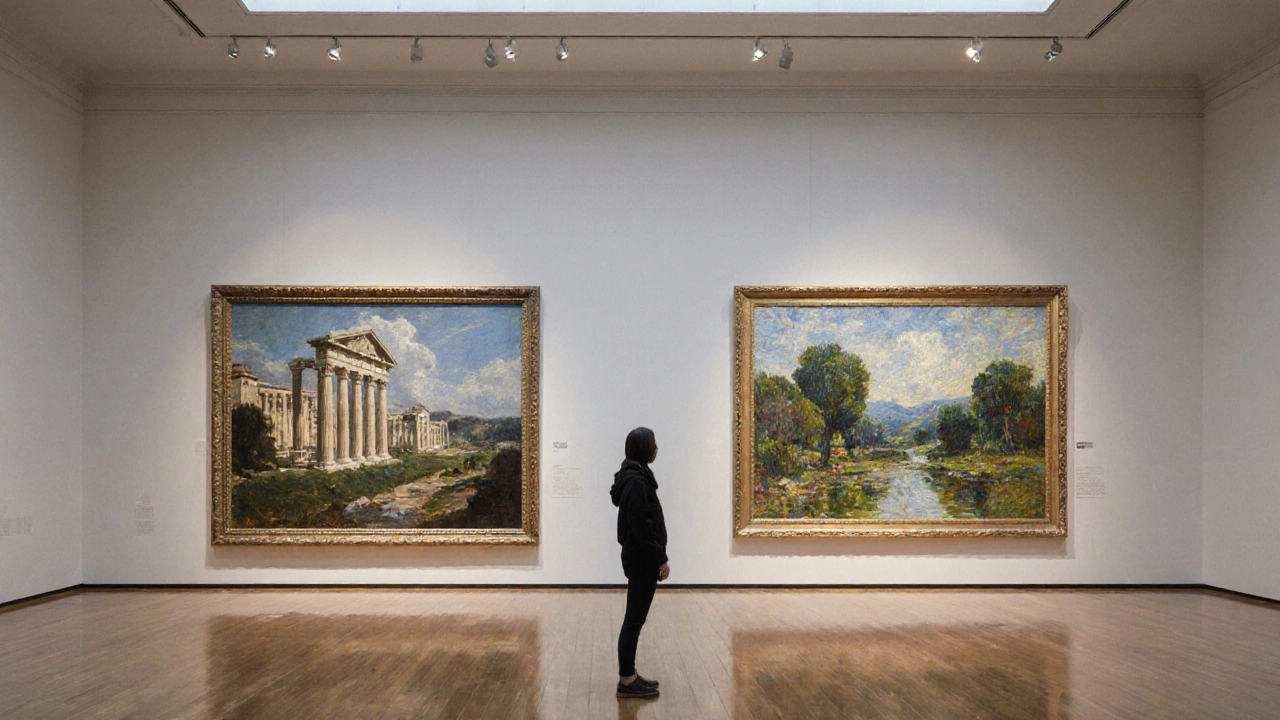
5. Common Misconceptions
Many people think “landscape painting = painting outdoors.” While plein air is iconic, the genre’s roots stretch back to the Renaissance, when masters like Giorgio Vasari included idealized landscapes in his Mannerist works that were entirely studio‑based. Conversely, not every outdoor sketch qualifies as a complete landscape painting; many plein‑air studies remain as studies or preparatory works.
Another myth: “All American landscape art is Hudson River School.” In reality, the U.S. saw a parallel surge of realistic, site‑specific work led by the Rocky Mountain painters, who blended observation with the grandeur of the West-think Bierstadt’s “The Rocky Mountains, Lander’s Peak.”
6. Extending Your Knowledge
If you’ve mastered the two main types, explore related sub‑genres:
- Marine landscape: Focuses on seascapes, storms, and harbors.
- Urban landscape: Captures city skylines, streetscapes, and industrial scenes.
- Abstracted landscape: Reduces scenery to color fields and shapes (e.g., Mark Rothko’s “Red Landscape”).
Studying these offshoots reveals how artists blur the line between idealization and observation, creating hybrids that defy simple categorization.
Frequently Asked Questions
What defines an idealized landscape versus a realistic one?
Idealized landscapes prioritize mood, symbolism, or narrative by arranging elements for visual harmony, while realistic (plein air) works aim to record the exact qualities of light, weather, and place as they appear in the moment.
Which art movements are best known for each type?
Idealized landscapes thrive in the Baroque, Romanticism, and the Hudson River School. Observational landscapes blossom in the Barbizon School, Impressionism, and the American West plein‑air tradition.
Can a single painting mix both approaches?
Yes. Many 19th‑century works combine a dramatic composition (idealized) with painstaking light studies (plein air), creating hybrid pieces that exhibit both narrative depth and visual accuracy.
Why did plein‑air painting become popular in the 19th century?
The invention of portable paint tubes in the 1840s and the rise of rail travel allowed artists to leave the studio, observe nature directly, and capture fleeting atmospheric effects-needs that aligned with scientific interest in light and color.
How do I start painting my own landscape in the plein‑air style?
Begin with a lightweight easel, a small canvas board, and a basic oil or acrylic palette. Sketch the horizon, block in major color zones, then work quickly to capture light shifts. Practice brush control; the goal is to finish before the light changes dramatically.
Whether you admire the mythic grandeur of a Turner sunset or the spontaneous brushwork of a Monet meadow, knowing the two core types sharpens your eye and deepens your connection to the art.
